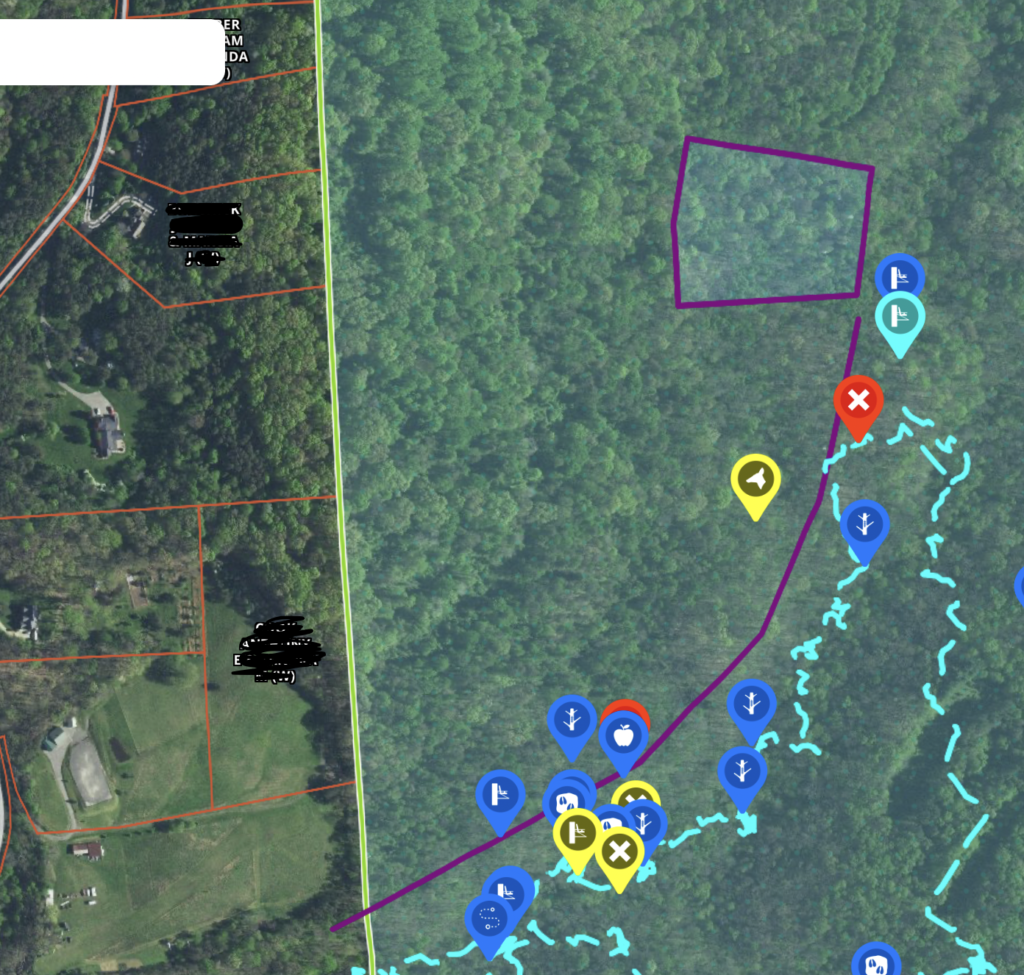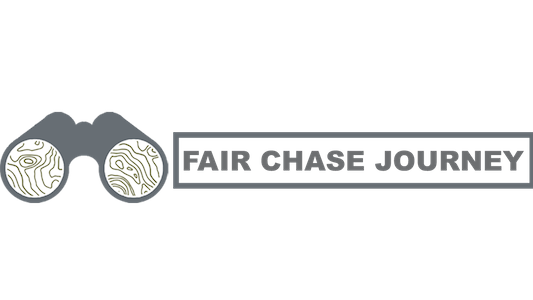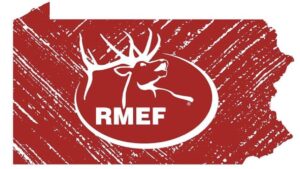
2021 Public Land Buck
Date: November 6th 2021 morning hunt.
Weather: 30 F winds light and variable from the SW. Dry, no precipitation in the past 48 hrs. Temps have been consistent, cool at night and warm during the afternoon. Last cold front to hit the area was 5 days prior to this hunt.
Timing of this hunt puts me in possibly the best week for rut action
Stand location is marked by the light blue pin.The purple line indicates the predicted deer movement moving from SW to NE towards a known doe bedding area (purple rectangle). The remaining pins and tracking is from hunting and scouting in prior seasons.

History is probably the most important piece of this hunt. Knowing how deer use an area at the time of year you plan to hunt is very important.
For the past five years I have spent a few days in this area in early November. To be honest, this is the only time of year I have hunted the area and cannot relate to any other part of the season.
Experience has taught me that it is very difficult to quietly push further into this area in the dark. The thick riparian area makes me feel like a bull in a China shop, causing more harm than good. Success has come by waiting for deer to move naturally to where I am set up on the edge of a known doe bedding area. You can see from the aerial that I have scouted and hunted farther into the area to the West, but the further I move West the more risk I have of bumping deer on their way back from the adjacent private land where they spend most of the night feeding.
Hunting pressure is always a concern but this year it was heavier than in years past. The day prior to this hunt (Friday) was my first day in the area. During a full day of hunting I observed 11 different hunters, a few of which were bird hunters chasing their dogs through the thick brush searching for pheasants. Frustrating as it was, I decided the best time to hunt this area would be the morning hours prior to 10:00. Evening hunts would be difficult with all the daytime human activity and increased hunting pressure in the afternoon hours. Deer will still move naturally under the cover of darkness and my best chance at catching them on their feet would be on their way back to bed in the morning.
Sunshine started to break through the trees and the forest began to come alive. The cool, crisp air allowed me to check the wind with my breath, confirming that the thermals were pulling the air up the hill behind me. Dry leaves made it easy for me to hear the deers steps before seeing them. A doe appears above the bench 40 yards to my SW, knowing that she is likely not alone I picked my bow off the hanger. Two minutes later a buck appears and mimics the trail of the doe until he is within 20 yards. Both deer stand inobservation as if they can sense that something is not right. My arrow splits the silence on its way to its mark behind the unexpecting bucks shoulder.

All of these things came together for a successful hunt. History with an area can help you predict future deer movement, in this scenario knowing the location of a doe bedding area helped me figure out where the deer would be and timing the hunt around the rut improved the chances of a buck following a doe. Hunting pressure is frustrating and can be difficult to deal with, but not impossible to work around. I likely won’t visit this area again until next November, and while much can change from year to year it is important to use historical data and hunt timing to base decisions off of and when you encounter hunting pressure never be afraid to improvise.








